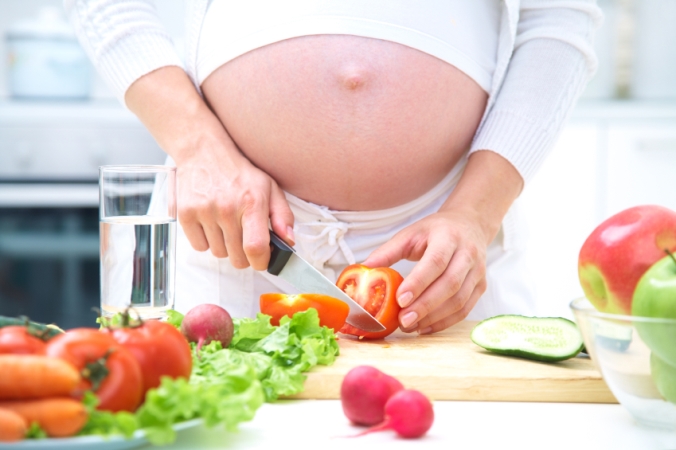The University of Adelaide has conducted a study into the food habits of pregnant women and it has been found that less than 10% eat enough vegetables, grains and lean meats.
Dr Lenka Malek, a researcher that took part in the study said, “The results are rather alarming – we were expecting to see at least some pregnant women correctly following the guidelines across all food groups, but there were none,”
There were 850 women involved in the study and less than a third ate enough dairy, but more than half met the recommended fruit intake.
Dr Malek has suggested more research needs to be done to ascertain why women fail to meet the basic nutritional standards.
As a mum who has gone through pregnancy three times, I know I would not have met the right nutrition intake either. I would have eaten what I craved and after experiencing dreadful morning sickness for the first half of each pregnancy, my main aim was to eat something that would stay in my stomach! I certainly didn’t crave vegetables. Anything green like broccoli, spinach or zucchini was avoided. Yet I ate these before I was pregnant and eat these vegetables regularly post pregnancy.
With this in mind, some ways to increase the nutritional intake during pregnancy is to blitz said veggies in a smoothie or dice them finely in a dinner like spaghetti bolognaise or shepherd’s pie.
If you are concerned by your nutritional intake during pregnancy, here is what to aim for as provided by The Australian Dietary Guidelines for pregnant women. These servings are per day.
Vegetables and legumes/beans: five servings. One serve = 75g or 100-350kJ, for example, half a cup cooked green or orange vegetables, one cup of raw salad vegetables, half a medium potato, one tomato.
Fruit: two servings. One serve = 150g or 350kJ, for example, one medium piece (apple, banana, orange), two small pieces (apricots, kiwi fruit), one cup diced or canned fruit.
Grain (cereal) foods, mostly wholegrain or high-fibre varieties: eight-and-a-half servings. One serve = 500kJ, for example, one slice of bread, half a cup of cooked rice, pasta or porridge, one-quarter of a cup muesli, three crispbreads.
Lean meats and poultry, fish, eggs, tofu, nuts and seeds, legumes and beans: three-and-a-half servings. One serve = 500-600kJ, for example, 65g cooked lean meat, 80g cooked lean poultry, 100g cooked fish, two eggs, 170g tofu, 30g nuts, one cup of cooked beans.
Milk, yoghurt, cheese or alternatives, mostly reduced fat: two-and-a-half servings. One serve = 500-600kJ, for example, 250ml milk, 200g yoghurt, two slices (40g) of cheese.
What is your diet like if you are pregnant or can you relate to not eating enough veggies when you were pregnant with your children?
Disclaimer: This article is for information only and should not be used for the diagnosis or treatment of medical conditions. Our writers use all reasonable care in compiling the information but make no warranty as to its accuracy. Consult a doctor or other health care professional for diagnosis and treatment of medical conditions.










